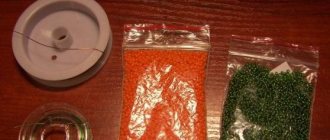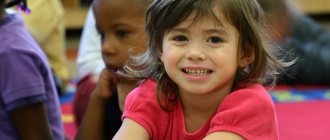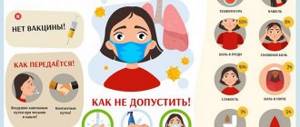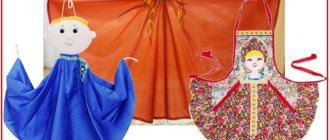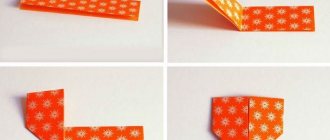What do moms and dads know about speech breathing? In practice, very little, meanwhile, speech breathing has a direct impact on the rapid development of coherent speech skills by preschool children. If it is well developed, children can pronounce sounds correctly, speak slowly, clearly, expressively, withstand the necessary pauses when pronouncing long sentences, and finish a phrase to the end.
It is important for parents to understand whether they, without being specialists, will be able to develop speech breathing correctly. To do this, you need to know what speech breathing is, that is, the formation of a connection of sounds with the participation of breathing, and how it can be formed. The main thing in this process is that the child must be able to take a smooth breath of a certain force, spend it economically when pronouncing phrases and exhale with the end of the sentence.
What causes weak breathing in preschool children?
Experts note the most common problems when speech breathing is being formed:
- Kids cannot finish a sentence because they don’t have enough air. Repeated inhalation interferes with smooth conversation and changes the tone of voice. The child finishes the sentence in a whisper.
- Preschoolers often experience poor development of the respiratory system, which leads to weak inhalation and exhalation, which is reflected in the conversation: the child speaks indistinctly and does not complete the sentence. The expressiveness of speech and the placement of pauses suffer. This phenomenon irritates the preschooler; he is reluctant to engage in communication.
- Chronic diseases (sinusitis) can also lead to poor breathing.
Games
Didactic games for the development of speech breathing are especially interesting for preschool children. They can be carried out indoors and on a walk. Invite adults and large groups of children to participate.
Turntables
Goal: learning to pronounce sounds while exhaling.
Cut small strips of paper. Place on tables. Have children take a deep breath through their nose, blow on the pinwheels, and deflate them. We blow without adding air.
Hot tea
Goal: developing the skill of long exhalation
We play in a group, children are given cardboard blanks in the form of cups with “steam”. Have the children blow on the cups.
Air football
Children are given straws and tennis balls. The kids unite in pairs and play on a football field, which is drawn on cardboard, blowing on a shirik made of small-diameter plastic tubes. The goal is to hit the ball into the opponent's goal.
Snowflakes
Goal: teaching long-term productive exhalation through the mouth.
How to do it: cut out snowflakes from paper, tie them to a ribbon using a thread. Let the kids blow on them, trying to blow the snowflake away as far as possible.
Basic rules for teaching speech breathing
The development of speech breathing will proceed correctly if you follow certain rules:
- When teaching children, adults themselves must be able to correctly use speech breathing, speak clearly, expressively, observing logical pauses.
- Children need to exercise constantly, without missing classes. Single absences are allowed during a child’s illness.
- Conduct classes in a well-ventilated room, before meals, for 5 minutes several times a day.
- Following the principle of gradualness, you need to start with simple, accessible exercises, gradually moving on to more complex ones.
- First, one exercise is practiced, then a new exercise is added to the mastered one.
- It is important not to allow the child to become overtired, otherwise he will lose the desire to do breathing exercises.
- Teach a preschooler to take a correct, medium-sized breath without straining the muscles of the neck and shoulders.
- Correct exhalation can be controlled with a piece of cotton wool placed on the palm or a thin sheet of paper, bringing it closer to the mouth.
Following these simple rules will give tangible results in a short time.
Breathing exercises for children in kindergarten
The goal of the classes is to teach the child nasal breathing, which stimulates the nerve endings in the nasopharynx. And also learn to breathe with different rhythms and different depths of inspiration. Exercises are good to do in the garden and at home. They may seem difficult at first, but it is important not to discourage them.
Basic recommendations:
- It is better to give children 2-3 years old no more than 3 exercises a day at a time. For children 5-7 years old, the lesson can last 10-20 minutes. You should start no earlier than an hour and a half after eating.
- It should be interesting and fun. For this you need props, more details about them are in the description of the exercises. Classes in poetry are going with a bang. You can download poems from the Internet, search for “breathing exercises in verse.”
- You can conduct classes outdoors during a walk or indoors. The latter needs to be ventilated. The optimal temperature is +17...+20°C, children should be lightly dressed.
- You need to practice constantly and put it into a routine.
- It should be remembered that gymnastics can complement the treatment of colds, but not replace it. You should not exercise during acute conditions.
How to properly organize the development of speech breathing?
Turning to the recommendations of experts, it can be noted that, like any process, the development of breathing goes through several stages, each of which is quite important. None of them should be ignored so as not to violate the integrity of the formation.
The first stage includes mastering the ability to blow correctly to develop the strength and duration of exhalation. Play, as a leading activity for a preschooler, can play a positive role. To interest children, experts recommend teaching in a playful way.
Exercises for developing speech breathing
- “Bunnies jump” when the baby blows light pieces of cotton wool off the table.
- “Leaves are falling, leaves are falling, yellow leaves are flying.” Various leaves are cut out of colored paper; the exercise is performed in the same way.
- “Balloon”, which is suspended at the level of the baby’s face. He tries to blow so that the ball flies up.
- “Butterflies Fly”, “Colored Rain” are prepared and performed in approximately the same way. Light figures are cut out of thin colored paper or fabric and hung on a pencil. The child holds the toy to his lips and tries to make the “butterflies” fly away with his exhalation.
An adult’s imagination will help diversify the themes of such exercises, for example, (dandelions, snowflakes, panicles, candles, feathers). You can use children's toys: wind spinners, water boats, whistles, soap bubbles.
Playing wind instruments is also good. Toys for young children are prepared by adults; older children can take an active part in their production and make them with their own hands. This will give a positive emotional mood to children. The main thing in all these exercises is to show an example of correct exhalation. If for some reason the child did not like the exercise, it is better to stop it temporarily and offer him another game later.
We train breathing using speech material
After the child has learned to take deep, smooth exhalations, you need to move on to tasks that stimulate the effective development of speech breathing itself.
We practice the pronunciation of vowel sounds and syllables
To do this, you and your child need to repeat the pronunciation of vowels, syllables and sound combinations many times, using one exhalation:
- The rain started dripping outside the window - drip, drip, drip;
- Doll Masha asks to eat - A-aaa, ooooh;
- The bear stomps after the cone - Top, top, top;
Learning short poems
The quatrain poems of A. Barto are ideal for practicing correct speech breathing. During their recitation and memorization, it is necessary to monitor the correct coordination of inhalations and exhalations carried out by the child during the time during which he pronounces each stanza.
Special breathing exercises
After the preschooler masters the skill of correct inhalation and, most importantly, exhalation, he moves on to the next stage - breathing exercises. There is no need to invent anything here, since experts have already tried to do this. It is more effective to use complex exercises developed by specialists. The exercises are designed to practice the volume of inhalation while simultaneously performing body movements. Children should be drawn to the fact that in all exercises, air is drawn in (inhale) energetically, and exhaled passively, imperceptibly.
- "Fists." The exercise is performed with a short, noisy inhalation through the nose, which captures the child’s attention. At the same time, the fists are clenched tightly and relaxation occurs as you exhale.
- "Belt." Similar to the previous exercise, an energetic, noisy breath is taken, while at the same time the baby pushes his fists down, imitating a throw.
- "Cat". Imitating the movements of the animal, children, breathing noisily through their noses, make turns with energetic movements of their arms, as if throwing something to the side.
- “Pendulum” or “Turns” - exercises are aimed at the actions of the arms and head. Wrapping his arms around his shoulders and not forgetting to take an active, noisy breath, the baby turns right and left, managing to exhale passively between turns.
- “Rolls” or “Dancing”, when performing exercises the movements are transferred to the legs. Squatting alternately on the left and then on the right legs, the child continues to breathe correctly: active inhalation - passive exhalation.
Breathing exercises: “We breathe correctly – we don’t get sick as much!”
Author - compiler: Evdokimova Elena Aleksandrovna. Teacher of the kindergarten “Lukomorye” of the Branch of the Kaskarinsky kindergarten “Golden Cockerel”, 1st category, experience: 6 years
Master class for teachers on the topic:
“Trainers for breathing exercises: “We breathe correctly - we get sick a little!”
Purpose: To familiarize educators with the features of conducting breathing exercises with preschool children using simulators. Objectives: 1. Talk about the need for regular breathing exercises for children. 2. Learn to use breathing exercises. 3. Create a favorable atmosphere for teachers through passion for a common cause.
Dear colleagues, I invite you to familiarize yourself with and learn breathing exercises yourself in order to further use this knowledge, skills and abilities in working with children. But first, I want to immerse you in the theoretical part of today's topic. We say “the morning breathes coolness”, “the earth sighed”, “the divine breath of the breeze”, “the breath of life” - our entire planet breathes, develops like a living organism. Breathing exercises will help manage this process.
Aleksandrovna Nikolaevna Strelnikova stated: “People breathe poorly, speak, scream and sing because they are sick, and they get sick because they do not know how to breathe correctly. Teach them this and the disease will go away.”
First of all, breathing exercises contribute to the overall health of the child’s body, enhancing the activity of the immune, respiratory, cardiovascular, nervous, and digestive systems. Deep and shallow breathing exercises that your baby masters help prevent the risk of colds. Breathing exercises are one of the ways to harden a child’s body, since it ensures the most complete ventilation of the lungs, trains the muscles of the respiratory apparatus, and improves overall physical well-being and emotional mood. There are a lot of interesting exercises (breathing exercises complexes) for the development of breathing in preschool children, which are necessarily included in various types of children's activities: activities for speech development, cognitive development, physical education classes, morning exercises, awakening exercises and as independent games-exercises with various attributes, toys - exercise equipment. Today I want to introduce you to some gaming techniques of breathing exercises. Breathing exercises are performed with poetic or musical accompaniment. The purpose of exercises with a simulator is to strengthen the respiratory muscles, stimulate the work of the upper respiratory tract, nasopharynx, and ensure ventilation of the lungs in all its parts.
"Kolobok"
Kolobok-Kolobok, You little rosy little barrel, Roll along the path, Beware of forest animals.
Make a model of a forest with paths and animals (hare, wolf, bear, fox). The child must help the kolobok (tennis ball) ride along these paths and avoid meeting the forest inhabitants.
"Snowball"
Something is hidden at the bottom, But I can’t see it yet. I'll blow on the snow and tell you what's there, friends.
Glue a picture to the bottom of a shallow box and add snow (confetti). The child’s task is to blow the snowball from the middle and see the picture.
"Butterfly".
The beautiful butterfly sat on the palm of my hand. The wind blew and she flew. She flew and flew and sat down on a flower.
Set up a flower meadow. The child’s task is to blow the paper butterfly off his palm. It is advisable for it to fly to the farthest flower. Photo 3.
The purpose of exercises with a simulator is to strengthen the respiratory muscles, stimulate the work of the upper respiratory tract, nasopharynx, and ensure ventilation of the lungs in all its parts. Breathing exercises help saturate every cell of the body with oxygen. Proper breathing stimulates the functioning of the heart, brain and nervous system, relieves a person from many diseases, and improves digestion.
"Good weather".
The sky is frowning in the morning, We need to help the sun. I will become a breeze, go away, clouds, away.
Glue the sun on the table, cover it with clouds of cotton wool (foam plastic). Children disperse, fan the clouds.
“Gluttonous Animals” - the essence of the game is for children to blow on a ball and get it into the animal’s mouth. The role of the ball can be played by a candy wrapper, a piece of cotton wool, or crumpled paper. It turns into a treat, and the children begin to treat the animals.
"Seasons". Holes are made in a plastic bottle. Confetti, finely chopped foam, cut out leaves, butterflies, and flowers are poured inside. A breathing tube is inserted into the hole in the plug. The one whose bottle contents match the answer to the riddle begins to blow.
Goal: development of the respiratory system.
I open my buds
into green leaves. I dress the trees, water the crops, there is a lot of movement, they are calling me. (spring)
There is a rainbow-arc in the sky. There are nougat berries in the garden, the lake is warmed by the sun: everyone is invited to swim. (summer)
In the morning we go to the yard -
Leaves are falling like rain,
They rustle underfoot
And they fly, fly, fly. (autumn)
I have a lot of things to do - I cover the whole earth with a white blanket, I clear the ice from the rivers, I whitewash fields and houses, And my name is . (winter)
"On the pond." The task of the children, holding a lily leaf on their palm, is to blow away the frog. Moreover, if you blow quickly and strongly, it will turn out that the frog will “jump” from the leaf.
“Magic Frames” - the essence of the game is for children to blow and help the heroes escape (Little Red Riding Hood from the evil Wolf, the Hare from the Wolf).
Didactic manual for breathing exercises “Aquarium”. Goals of breathing exercises:
- train the respiratory system. Teach children to breathe correctly through the nose, mouth, and perform various exercises while breathing.
- relieve emotional stress
- healing of the body. This manual is also used as material when covering the topics “Underwater World”.
I introduced you to some breathing exercises. You can use all your imagination to come up with something new, diversify breathing exercises, choose poems, make exercise equipment.
Where can we use breathing exercises? Yes, in various routine moments: as part of a physical education lesson, in music educational activities, in morning exercises, after a nap, on a walk, in play activities, etc. Dear colleagues, I thank you for your attention and diligence, I hope that the master class was informative, useful and interesting for you.
Publication of the author on other sites:
Used Books:
1. “Games that heal.” .A.S. Galanov. - M., Sphere shopping center, 2009.
2. Gorbatenko O. F., Kardailskaya T. A., Popova G. P. “Physical and recreational work in preschool educational institutions: planning, classes, exercises, sports and leisure activities.” – Volgograd: Teacher, 2008
3. Lavrov N. N. “Breathing according to Strelnikova.” – Rostov-on-Don. - Phoenix. – 2003.
4. 365 gold breathing exercises / comp. N. Olshevskaya. – M.: AST; SPb.: Owl: Vladimir.
5. Podolyanskaya E. I. “Forms of health improvement for children 4-7 years old: kinesiological and breathing exercises, morning exercises.” – Volgograd: Teacher, 2009
We invite teachers of preschool education in the Tyumen region, Yamal-Nenets Autonomous Okrug and Khanty-Mansi Autonomous Okrug-Yugra to publish their teaching materials: - Pedagogical experience, original programs, teaching aids, presentations for classes, electronic games; — Personally developed notes and scenarios of educational activities, projects, master classes (including videos), forms of work with families and teachers.
Why is it profitable to publish with us?
1. 1. “Kindergartens of the Tyumen Region” is an officially registered specialized media outlet at the federal level. EL No. FS 77 - 43321 2. The activities of the editorial office are supported by the Department of Education and Science of the Tyumen Region 3. We issue a “Certificate of Publication” in the media. 4. The document has a unique number, is entered in the register, has the original seal of the editorial office of the online publication and signature. 5. “Certificate of publication” in the media is sent to the author in both paper and electronic versions. In detail In detail >>> Sample “Certificate of publication of author’s methodological material in the media”.pdf
Why speech breathing is more beneficial than usual
When you breathe, air enters your lungs. This causes a decrease in pressure, due to which the lungs do not receive a large dose of oxygen. The features of diaphragm breathing allow you to breathe much deeper. Therefore, speech breathing has many advantages:
- Diaphragmatic breathing enriches the blood with oxygen. Due to this, the functioning of the circulatory and vascular systems improves.
- The lungs are cleansed, which is useful for smokers; they are less susceptible to bronchopulmonary diseases.
- If you constantly breathe through your diaphragm, you will be much less likely to experience shortness of breath.
- Features of speech breathing affect not only the lungs and blood flow. Diaphragmatic breathing improves the functioning of the gastrointestinal tract, pancreas and kidneys. It is even possible to lose excess weight from proper breathing.
- And most importantly, proper breathing affects our speech. Therefore, it is so important to learn how to breathe correctly from childhood.
How to breathe correctly?
When diagnosing speech development, speech therapists always pay attention to how the child breathes during a conversation, the strength and duration of his inhalations and exhalations, and how he places pauses. Formation of speech breathing is one of the first stages of correctional work with a child who has any speech disorders. Correct speech breathing has the following signs:
- Short breath through the nose;
- Exhale smoothly, the air comes out through the mouth;
- Exhalation is carried out to the end;
- After each exhalation there should be a short pause (2-3 seconds).
The development of speech breathing is closely related to the functioning of physiological breathing.
| Physiological respiration | Speech breathing |
| Involuntary | free |
| Inhale - exhale - pause | Inhale - pause - exhale |
| Inhalation and exhalation are carried out in one impulse. | Inhalation is carried out with one impulse, exhalation - with several (depending on the content of the statement). |
Only by learning to breathe correctly (deep short inhalation and smooth long exhalation) will a child be able to fully master his voice. The most effective methods of working with preschoolers are breathing exercises. Conventionally, they can be divided into two large groups, depending on their purpose:
- Formation of correct exhalation;
- Breathing training using various speech materials (practicing the pronunciation of sounds and their combinations, learning poetry).
The development of speech breathing in preschoolers allows:
- Speed up the process of staging and automating speech sounds;
- Increase the number of words that the baby pronounces in one exhalation;
- Form intelligible, coherent speech;
- Coordinate the processes of speech, breathing and movements.
Formation of correct speech breathing in preschoolers
Kiyachenko Larisa
Formation of correct speech breathing in preschoolers
Breathing exercises are an integral part of the health regime in our preschool institution . In order to increase the effectiveness of this area of work, the speech therapist teacher built a model of interaction with the physical education instructor, teachers, and parents. Having identified the level of development of students at the beginning of the school year, specialists jointly solved the following problems: development of physiological and speech breathing , formation of tempo , rhythm and expressiveness of speech. As part of providing advisory assistance to educators, a master class “Game exercises for the development of physiological and speech breathing ” was organized; a booklet has been developed for parents “Breathe correctly , speak beautifully, rarely get sick”
.
For the purpose of systematic use, breathing exercises are included in complexes of health-improving gymnastics after sleep, morning exercises, different stages of classes (organizational issues, physical education classes, correctional classes of a speech therapist teacher.
Work on the formation of correct physiological and speech breathing in children with speech pathology involves solving the following problems:
— improve the function of external (nasal)
respiration ;
- develop deeper inhalation and longer exhalation;
- develop sound (phonation)
exhalation;
- develop speech breathing in the process of pronouncing the text.
When performing exercises, the game method is widely used, which involves the use of various games, exercises of a gaming nature in combination with other techniques: demonstration, explanation, instructions and questions.
Performing breathing exercises in a playful way causes a positive emotional mood in the child, relieves stress and contributes to the formation of practical skills . While doing breathing exercises , a child will find himself in a special microworld of fairy tales, songs, games, and poems.
Work on the formation of correct physiological and speech breathing is carried out in several stages.
First stage
Goal: improve the child’s external respiration .
During play activities, children gain knowledge that:
- you need to breathe through your nose;
- you cannot raise your shoulders when inhaling;
— the stomach should participate in breathing .
Preschoolers acquire nasal breathing and master basic breathing exercises .
Exercise “Hippopotamus”
A child in a sitting position places his palm on the diaphragm area. An adult gives instructions: “Sit down, put your palm on your stomach and feel how it rises when you inhale . And it goes down when you exhale ” The child’s actions are accompanied by a rhyme:
The hippos sat down,
Touched bellies:
Then the tummy rises,
Then the tummy drops.
Exercise “I breathe through my nose”
The teacher offers to look at the noses (beaks)
in different animals and birds in the pictures. Gives instructions: “
Inhale through your nose and exhale through your nose .” The child’s actions are accompanied by a rhyme:
I breathe freely through my nose,
Quieter, louder - whatever you want.
Birds and flowers breathe.
He, and I, and you breathe.
Second phase
Goal: to develop a deep breath and a longer exhalation.
During the lesson, children gain knowledge about the basic respiratory processes (inhalation, exhalation)
and that the power of exhalation can be trained, they acquire the skills of smooth and long exhalation through the mouth, and train the power of exhalation.
Exercise "Kolobok"
Illustrations are used for the fairy tale “Kolobok”
(the meeting of the Kolobok with the fox)
. The picture shows a fox in front of an empty stump. The flat bun is superimposed on the stump, we need to save it. The child should inhale through the nose and gently exhale through the mouth to blow the bun off the stump.
Exercise "Snowflake"
Holding pieces of cotton wool in their hands, perform movements while listening to the text of the poem.
A small snowflake sat on the palm (Children show the snowflake)
I'll catch her, sit a little. (Cover one palm with the other )
One, two, three, four, five (Open slowly)
I'm letting you fly.
A snowflake lies on the palm . (Hold a snowflake on the palm )
Let's blow a little on this snowflake.
Blow quietly, the snowflake lies, (Blow quietly)
Blow harder and the snowflake flies. (Blowing hard)
Third stage
Goal: development of voiced exhalation.
Children's attention is directed to the sound of the voice during the exhalation process.
At this stage, children are introduced to sound breathing games . The child draws out sounds without a voice and with a voice while exhaling, for as long as possible. First, vowel sounds are drawn out, with changes in the strength of the voice, with different intonations. Then consonants. For exercises, only those sounds that the child pronounces correctly . The duration of exhalation is regulated by the child himself.
Game "Monkey"
It is carried out in front of a mirror. An adult tells the children: “Imagine that a monkey is looking at you and repeating everything after you.”
.
You can use facial expressions to depict joy, surprise, resentment and pronounce vowel sounds as you exhale: “O”
- surprised,
“U”
- offended,
“A”
- happy.
Game "Big - Small"
Children are shown paired pictures depicting large and small objects. It is explained that a large balloon deflates with the sound F, and a small one with the sound Fb. It is suggested to pronounce the sounds one by one while exhaling. Other options for paired pictures: fire hoses and shower hose (C, Cb), windmill and room fan (B, Bb)
.
Fourth stage
Goal: development of speech breathing .
This stage is basic in speech therapy work on planning and forming speech utterances . Children first learn to pronounce syllables and individual words while exhaling, then phrases of two words, three, four, sayings, tongue twisters. For the exercises, syllables with sounds that are well pronounced by children are taken (ma - mo - mu - we - me, na - but - well - ny - ne, then “sing”
two-syllable words made from open syllables (ma-ma, pa-pa, three-syllable words
(ma-li-na, ku-bi-ki)
.
Game "Smeshinka"
We invite the child to imagine that a “laugh”
and sounds were heard: ha-ha-ha, hee-hee-hee, ha-ha-ha.
Game "Five Names"
On the instructions of the teacher, children list, based on the picture, and then from memory, five names of any objects. For example: the child takes the first short deep breath and says: “I know five names of trees.”
, and continues after a pause and a second breath:
“birch, rowan, fir tree, maple, oak
.
Fifth stage
Goal: training speech breathing in the process of pronouncing a text.
Exercise “Repeat”
The teacher reads a poem by S. Ya. Marshak to the children, pronouncing it line by line, and the children, following the adult, repeat each phrase in one breath
The sun is shining.
The sun is shining brightly.
The sun is shining very brightly.
The sun is shining very brightly - the hippopotamus has become hot.
Thus, targeted and systematic correctional and developmental work on the development of speech breathing in preschoolers leads to an increase in the level of formation of this function , and also helps to increase the effectiveness of speech therapy work in general.
Literature:
1. Anishchenkova E. S. Learning to speak correctly in 20 minutes a day . A unique system for speech development. – M., 2009.
2. Vakulenko L. S. Correction of sound pronunciation disorders in children - St. Petersburg, 2012.
3. Kosinova E. M. My first book of knowledge. About everything in the world. The ABC of correct pronunciation . – M., 2005.
4. Rudik O. S. We play with children and develop speech. M., 2013.
Exercises to develop the strength and duration of exhalation
- Breeze. Tie several ribbons of serpentine or Christmas tree rain to a thread or lace. Invite your baby to blow on them and create a breeze. You can make the task more difficult by asking them to blow on ribbons of a certain color. The distance between the face and the ribbons should be approximately 10-15 cm.
- Leaf fall. Cut out real autumn leaves from paper or collect them from the street. Together with your child, you can arrange a real leaf fall by blowing them off the table. In the winter season, you can also play with paper snowflakes.
- Fly, feather! Let the baby throw the feather up and blow on it from bottom to top, not letting it fall.
- Pencil athletes. Draw start and finish lines on the table. At the start, put two pencils of different colors. Take turns blowing with your child on his own pencil and arrange a competition to see which of them will “run” to the finish line first.
- Sailors. Make boats out of paper or cork and lower them into a basin of water. There is a strong wind at sea - we blow on the ships, forcing them to move.
- Blow out the candles. You can role-play a birthday situation with your child. Prepare a toy set, cake and real candles. By blowing out the candles, you can make a wish.
- Pinwheel. A fidget toy is great for creating proper exhalation. Children love to watch the rotating blades and are proud of the result of their efforts.
- Whistles with the sounds of various animals and birds will also delight the baby and will be very useful for the development of his speech breathing.
- Another simple way to practice breathing is using soap bubbles.
Make sure that the child makes smooth and long exhalations. Gradually make the exercises more difficult by increasing the distance between your face and the object being deflated.

